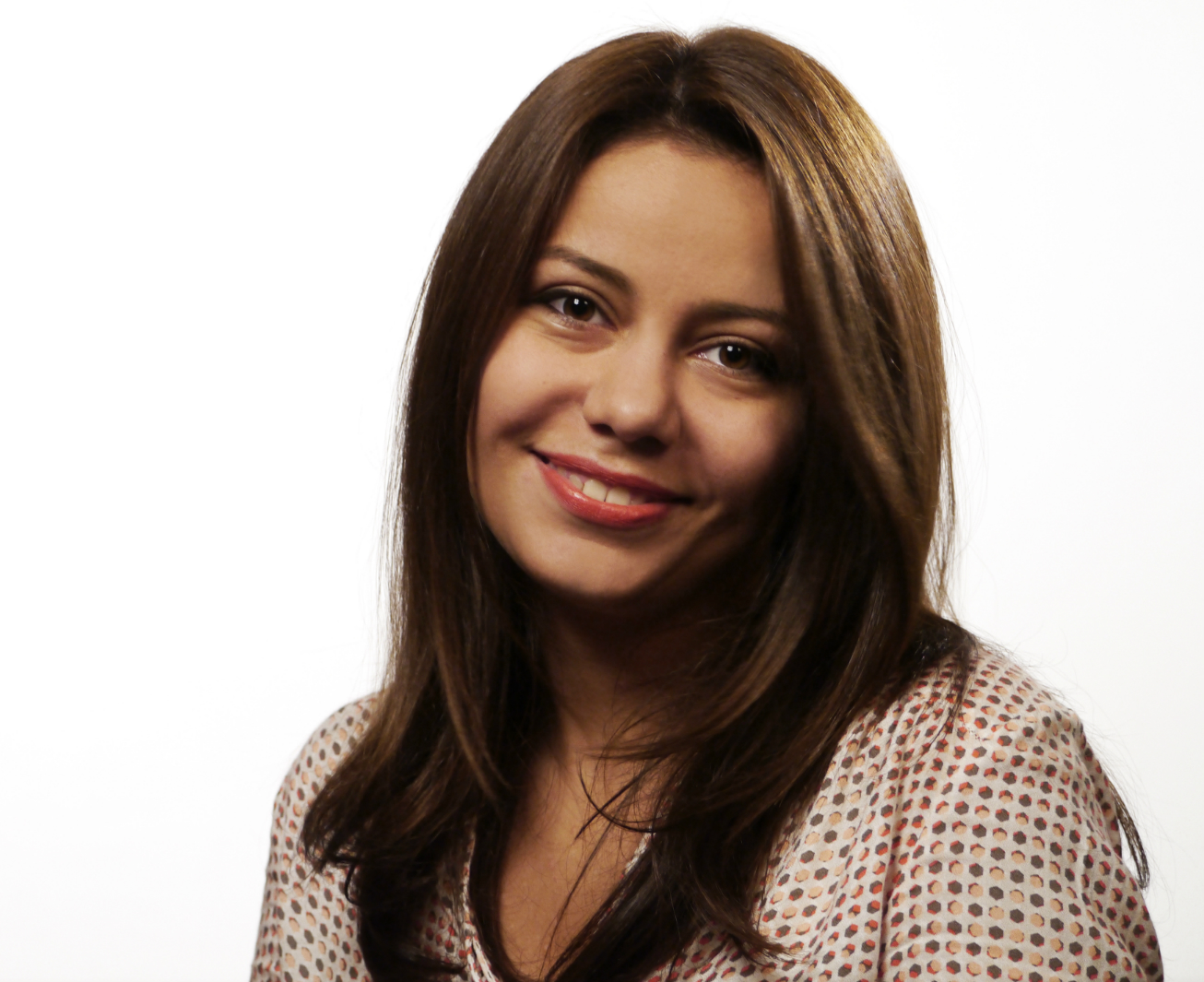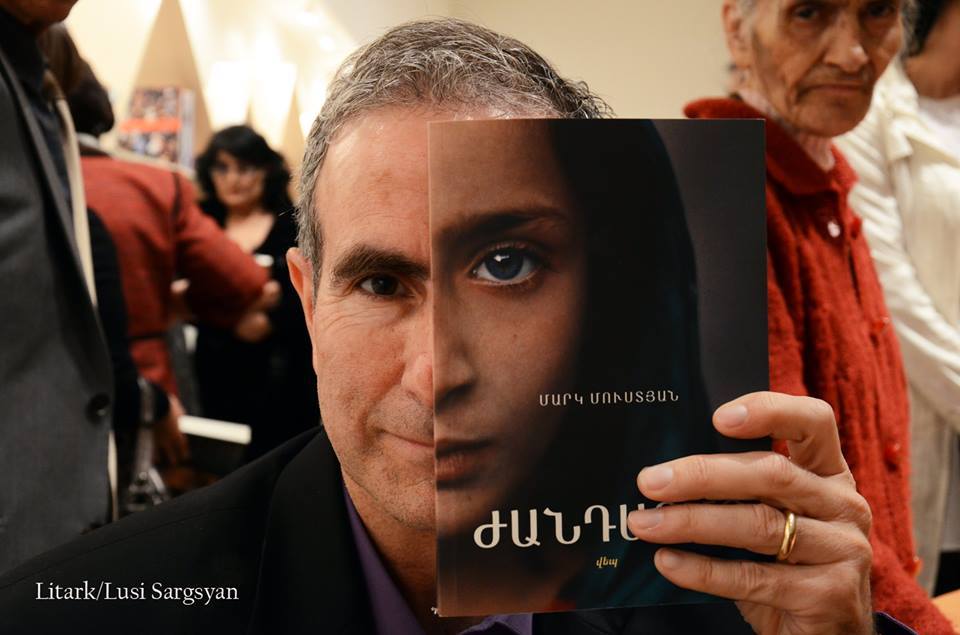Photojournalist Lusi Sargsyan discovered that her photograph was published in local daily Hraparak perchance from her colleague.
The photograph was used in the May 1 issue of the newspaper without permission and the watermark on the original was cropped.
Regarding this case of copyright violation, the photojournalist wrote [AM] on her Facebook page: “This is how Hraparak daily congratulated me on World Press Freedom Day…”
The photograph was taken at the April 28 book launch of Mark Mustian’s The Gendarme at the Cafesjian Center for the Arts. Sargsyan collaborated with organizers of the Literary Ark Festival and the credit on the photograph read “Litark/Lusi Sargsyan”. This and Sargsyan’s other photographs were uploaded on the Literary Ark Festival Facebook group and page.
“In my experience, this isn’t the first time. Different websites on several occasions have used my photographs without permission. I spoke with them and they added a link. But this was the first case in print media. Here, it’s more complicated: there’s no opportunity to correct your mistake by adding a link,” says the photojournalist.
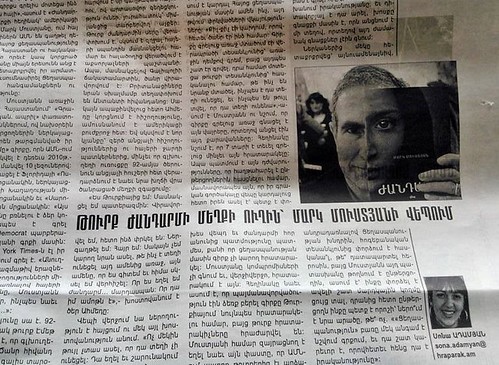
Sargsyan called Hraparak but was unable to speak with the editor. She tried to solve the matter with Sona Adamyan, the Hraparak journalist who wrote the piece Sargsyan’s photograph accompanied. A conversation between them on Facebook turned into a dispute, leading to personal insults.
Adamyan says she’s been working in not only journalism, but also photojournalism for three years. She prefers that her own photographs accompany her articles. She had taken her own photos at the book launch; however, she was unable to deliver them to the paper before it went to print. So the designer availed of the wide opportunities of the internet.
“At our office, we take the photos from the internet; the layout editor does it, guided by the newspaper’s design requirements and standards. Since there’s a large database of photos on the internet, it’s not possible to determine the author of each photograph, and the issue of protecting copyright is not resolved. The field is not coordinated; it’s a common problem,” says Hraparak editor-in-chief Armine Ohanyan.
Adamyan says, as a photographer, she too repeatedly has dealt with the same problem. After this incident, upon her initiative, the newspaper published a correction in the next issue in which it attributed credit to Sargsyan for her photo published in the previous issue.

“Also important is the fact that Hraparak is the Literary Ark Festival’s information sponsor and its advertising banners are published on our website. The Literary Ark Festival paid its photographer for the photos, and it’s logical that the festival, if necessary, could’ve and should’ve provided its information partners with photographs,” adds Adamyan.
Initially, Sargsyan intended to take legal action but has since abandoned the idea. She wants to avoid unnecessary hassle, though she believes that the newspaper’s retraction falls short.
“They only wrote to whom the photo printed in the May 1 issue belongs. They didn’t write anything about violating copyright and, basically, didn’t apologize,” says Sargsyan.
After this incident, Adamyan discovered that Erit.am, an online youth newspaper with which Sargsyan collaborates, in an interview with Nonna Zotova in February this year, published among personal photos also her (Adamyan’s) photograph without permission. Adamyan spoke with website editor Karen Grigoryan, after which the editorial team decided to replace Adamyan’s photograph with another photo.
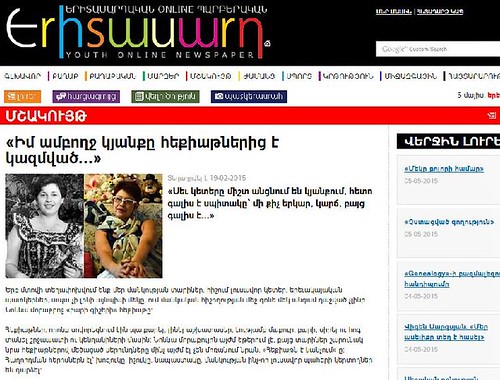
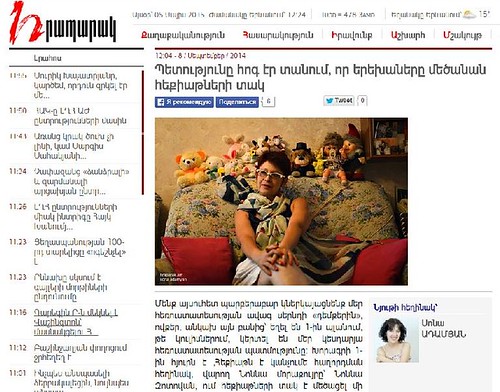
Grigoryan says the photos were provided by the interview subject and the photos were credited (in the article) as being from Zotova’s personal archives.
“The photographer requested either to use the photo and credit her or remove it [from the site]. We chose the second option: we replaced the photo with another one. And for, according to Adamyan, ‘violating her copyright’ for those two months, I apologized to her during our phone conversation,” says Grigoryan.
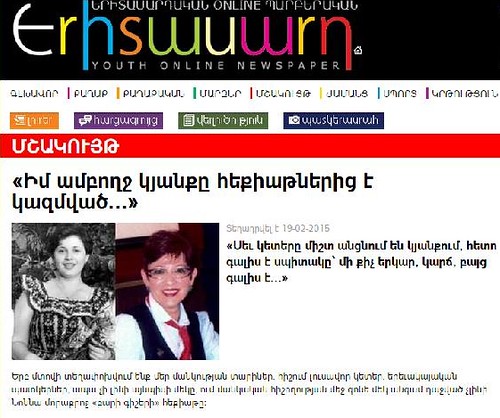
“Hraparak didn’t delay and took action in the subsequent issue, while Erit.am preferred to address the matter simply by removing the photograph, though in the case of a website, it wouldn’t have been a lot of trouble to add the photographer’s name. In all this, it’s not a problem of individuals — my or the other photographer’s. It’s just that we work in news outlets that for some technical issue or another violated copyrighted,” says Adamyan.
The parties in this situation say they would be happy if one day the sector was regulated and such problems no longer arose. But until then, news outlets in one case violate another’s copyright, while in another case, they themselves are the injured party.
Sona Kocharyan
